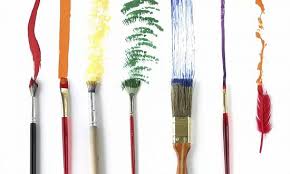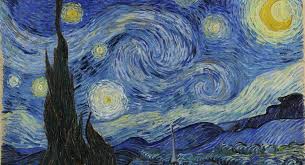MASTERPIECES OF PASTEL FROM FUNDS OF THE TREYAKOV GALLERY (part 2)
 In Russia, pastel technique appeared in the second half of the XVIII century, but never reached such popularity as in Europe. The first pastors known to us were invited foreign masters – G.-F. Schmidt, V. Eriksen, Gagelgans, I.-G. Schmidt, I. Bardou and their younger contemporary K. Bardou. Many of them were portrait painters. Their works are executed at a good professional level, in the tradition of cabinet portraiture. They are characterized by a picturesque solution, they carefully wrote out individual features, finely modeled faces, powdered wigs, carefully detailed clothing, thin foam of lace, the mysterious sparkle of orders, the gentle shimmer of tones typical of pastels. In these small, often paired, family portraits that once adorned the walls of Russian noble nests, live human faces, famous and unknown, appear in front of the viewer – people who have gone down in history but have not sunk into oblivion, thanks to artists who have preserved their appearance for posterity. Continue reading
In Russia, pastel technique appeared in the second half of the XVIII century, but never reached such popularity as in Europe. The first pastors known to us were invited foreign masters – G.-F. Schmidt, V. Eriksen, Gagelgans, I.-G. Schmidt, I. Bardou and their younger contemporary K. Bardou. Many of them were portrait painters. Their works are executed at a good professional level, in the tradition of cabinet portraiture. They are characterized by a picturesque solution, they carefully wrote out individual features, finely modeled faces, powdered wigs, carefully detailed clothing, thin foam of lace, the mysterious sparkle of orders, the gentle shimmer of tones typical of pastels. In these small, often paired, family portraits that once adorned the walls of Russian noble nests, live human faces, famous and unknown, appear in front of the viewer – people who have gone down in history but have not sunk into oblivion, thanks to artists who have preserved their appearance for posterity. Continue reading
MASTERPIECES OF PASTEL FROM FUNDS OF THE TREYAKOV GALLERY (part 1)
 The collection of the State Tretyakov Gallery contains about 800 pastels, some were purchased by P.M. Tretyakov.
The collection of the State Tretyakov Gallery contains about 800 pastels, some were purchased by P.M. Tretyakov.
Pastel must be stored under glass. It is very vulnerable: it can fall off from a concussion, all kinds of travels are dangerous for it, it is disastrously affected by direct sunlight, temperature extremes, excessive dryness or humidity. Constant concern for the safety of “loose” pastel works does not allow them to be often and continuously exposed. To see them in the halls of the museum is a rare and significant event.
The word pastel comes from Italian pasta – pasta or pastry. This is the name of the material for drawing, the technique in which the artist works, and, finally, the artwork drawn with pastel pencils. Continue reading
RUSSIAN ACADEMY OF ART OF ST. PETERSBURG (part 2)
 Under Catherine II, in 1764, a new detailed Charter of the Imperial Academy of Arts was adopted, and the close sovereign Ivan Ivanovich Betskoy became president. The Empress wrote: “For better encouragement and success, We, having taken this Academy into Our patronage … determine it to be under our sole Imperial jurisdiction, providing it with the amount necessary for its maintenance.” In the early period of the reign of Catherine II, a kind of “state utopia” of enlightened Russia arose, and the Academy of Arts had to play an important role in creating a visible image of the transformed empire.
Under Catherine II, in 1764, a new detailed Charter of the Imperial Academy of Arts was adopted, and the close sovereign Ivan Ivanovich Betskoy became president. The Empress wrote: “For better encouragement and success, We, having taken this Academy into Our patronage … determine it to be under our sole Imperial jurisdiction, providing it with the amount necessary for its maintenance.” In the early period of the reign of Catherine II, a kind of “state utopia” of enlightened Russia arose, and the Academy of Arts had to play an important role in creating a visible image of the transformed empire.
Catherine II described her reign in a letter to her permanent correspondent, ambassador of the tiny German state of Saxe-Goth in Paris, Baron Melchior Grimm, ironically alluding to one of La Fontaine’s fables and, in addition Continue reading
RUSSIAN ACADEMY OF ART OF ST. PETERSBURG (part 1)
 In 2007, the Russian Academy of Arts celebrates its 250th anniversary. November 17, 1757 (old style – November 6) – The governing Senate of the Russian Empire adopted a decree on the establishment of the “Academy of the Three Noble Arts.” In fact, such an institution in Russia was conceived much earlier, and by that time it had been successfully operating for at least thirty years. The idea of establishing a community of artists was expressed by Peter the Great and his close associates in the 1690s. After visiting the first emperor of Paris and the French academies in 1719, this idea took on a concrete form, but for many cases Peter the Great signed the necessary decree only shortly before his death, December 22, 1724. He proclaimed the creation of a single “Academy of Sciences and Arts” – a fact that is very important today, since the Russian Academy of Arts cherishes the fact that it was born simultaneously with the Russian Academy of Sciences and has been cooperating with it for almost three centuries. Continue reading
In 2007, the Russian Academy of Arts celebrates its 250th anniversary. November 17, 1757 (old style – November 6) – The governing Senate of the Russian Empire adopted a decree on the establishment of the “Academy of the Three Noble Arts.” In fact, such an institution in Russia was conceived much earlier, and by that time it had been successfully operating for at least thirty years. The idea of establishing a community of artists was expressed by Peter the Great and his close associates in the 1690s. After visiting the first emperor of Paris and the French academies in 1719, this idea took on a concrete form, but for many cases Peter the Great signed the necessary decree only shortly before his death, December 22, 1724. He proclaimed the creation of a single “Academy of Sciences and Arts” – a fact that is very important today, since the Russian Academy of Arts cherishes the fact that it was born simultaneously with the Russian Academy of Sciences and has been cooperating with it for almost three centuries. Continue reading
ART UNIONS AND CREATIVE UNIONS OF RUSSIA ON THE TURN OF THE XIX-XX CENTURIES (part 3)
 “Bauhaus” (German: Bauhaus – building house) – art educational institution and creative association in Germany. It was founded in 1919 by the architect V. Groppius in Weimar, in 1925 it was transferred to Dessau, in 1933 it was abolished by the fascist authorities. The leaders of the Bauhaus (H. Mayer, J. Albers and others), relying on the aesthetics of functionalism, set out to develop new principles of shaping in plastic arts; they strove for a comprehensive artistic solution to the domestic environment, developed the ability of students to creatively comprehend new materials and designs, and taught them how to create solid and practical products. A significant place was given to design teaching. The main link of the educational process at the Bauhaus was the students’ labor practice in production, art and design workshops, where, along with studies and studies, they created architectural projects, decorative plastic works, and samples of mass household products. Continue reading
“Bauhaus” (German: Bauhaus – building house) – art educational institution and creative association in Germany. It was founded in 1919 by the architect V. Groppius in Weimar, in 1925 it was transferred to Dessau, in 1933 it was abolished by the fascist authorities. The leaders of the Bauhaus (H. Mayer, J. Albers and others), relying on the aesthetics of functionalism, set out to develop new principles of shaping in plastic arts; they strove for a comprehensive artistic solution to the domestic environment, developed the ability of students to creatively comprehend new materials and designs, and taught them how to create solid and practical products. A significant place was given to design teaching. The main link of the educational process at the Bauhaus was the students’ labor practice in production, art and design workshops, where, along with studies and studies, they created architectural projects, decorative plastic works, and samples of mass household products. Continue reading



